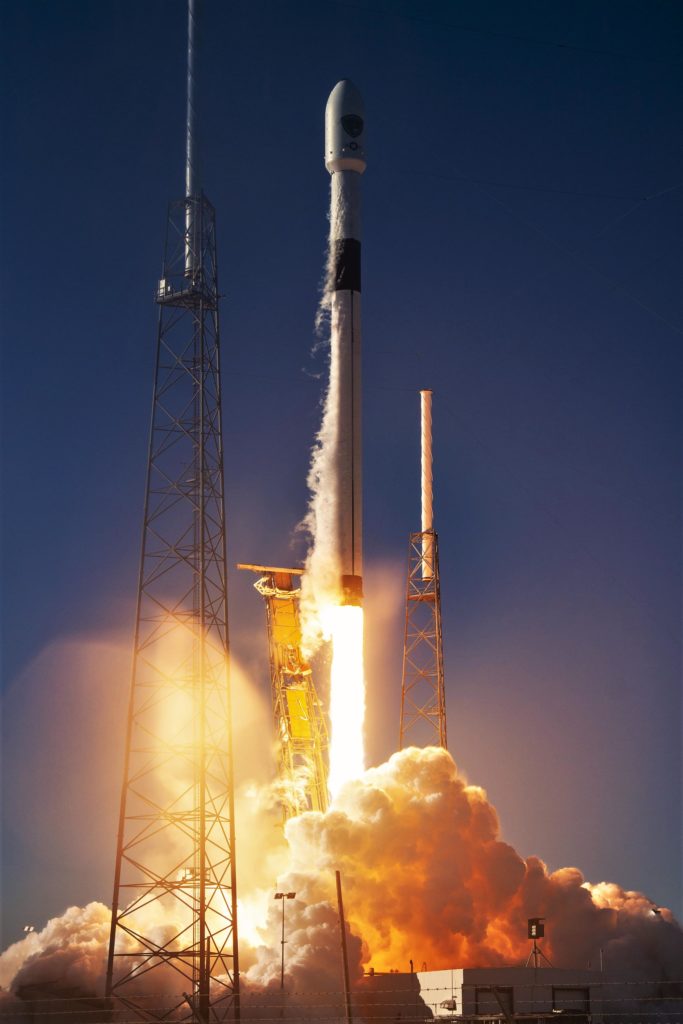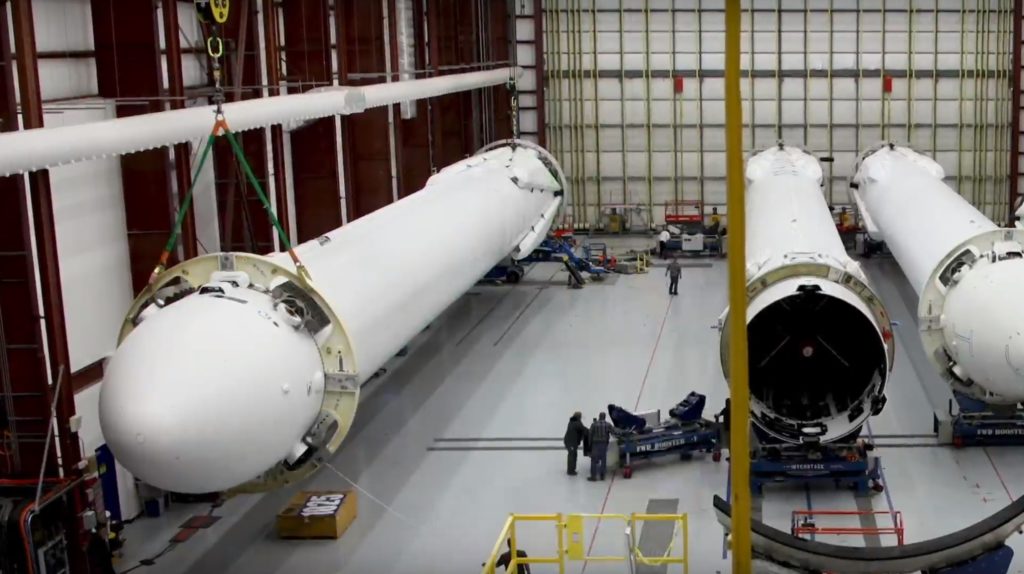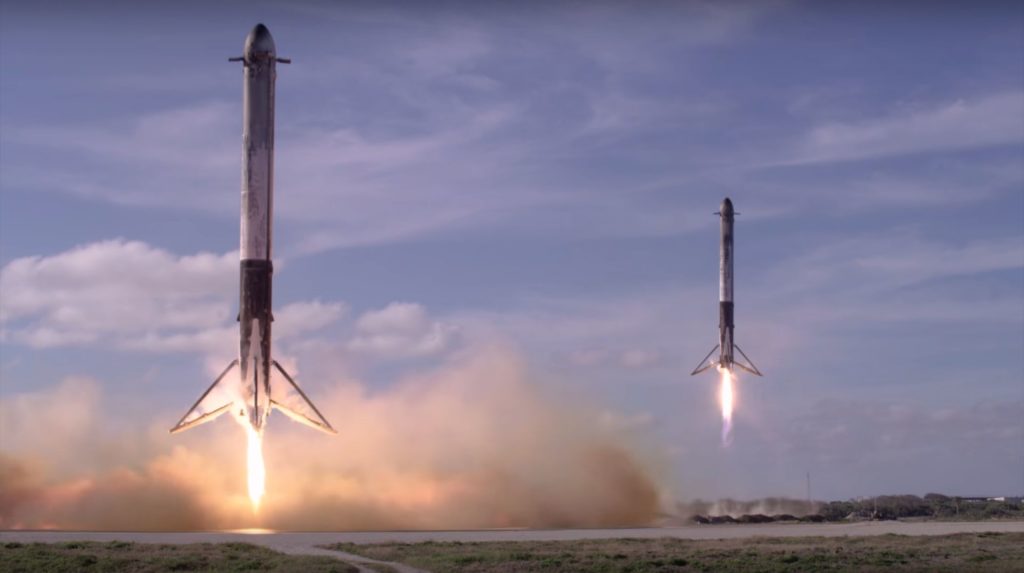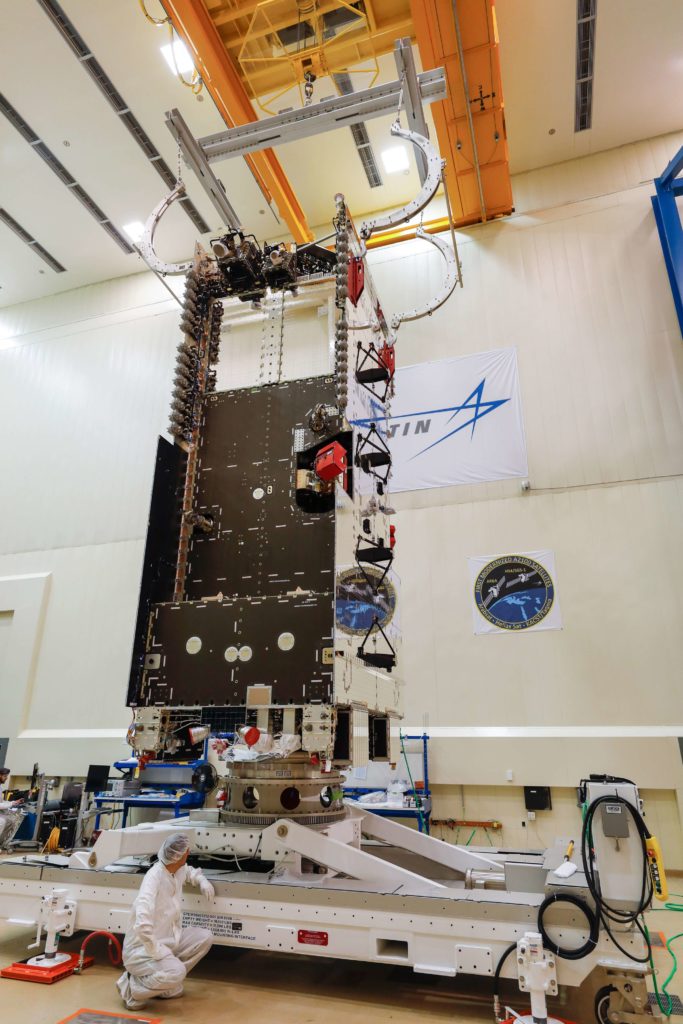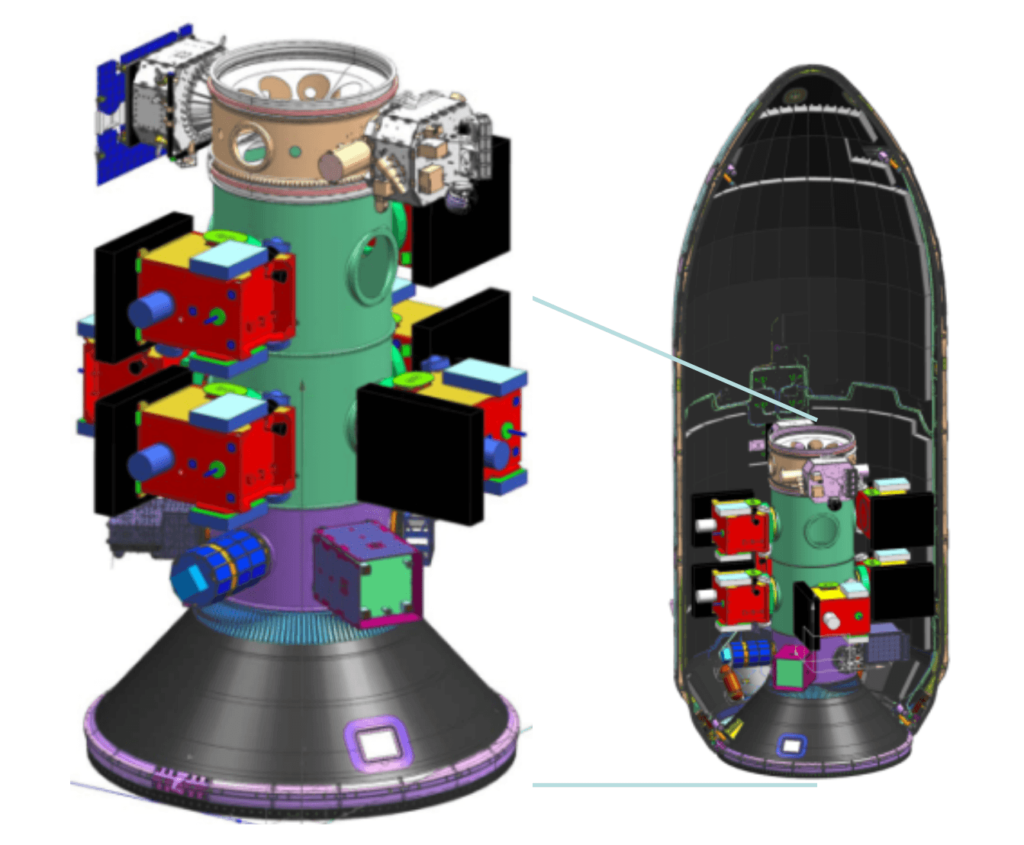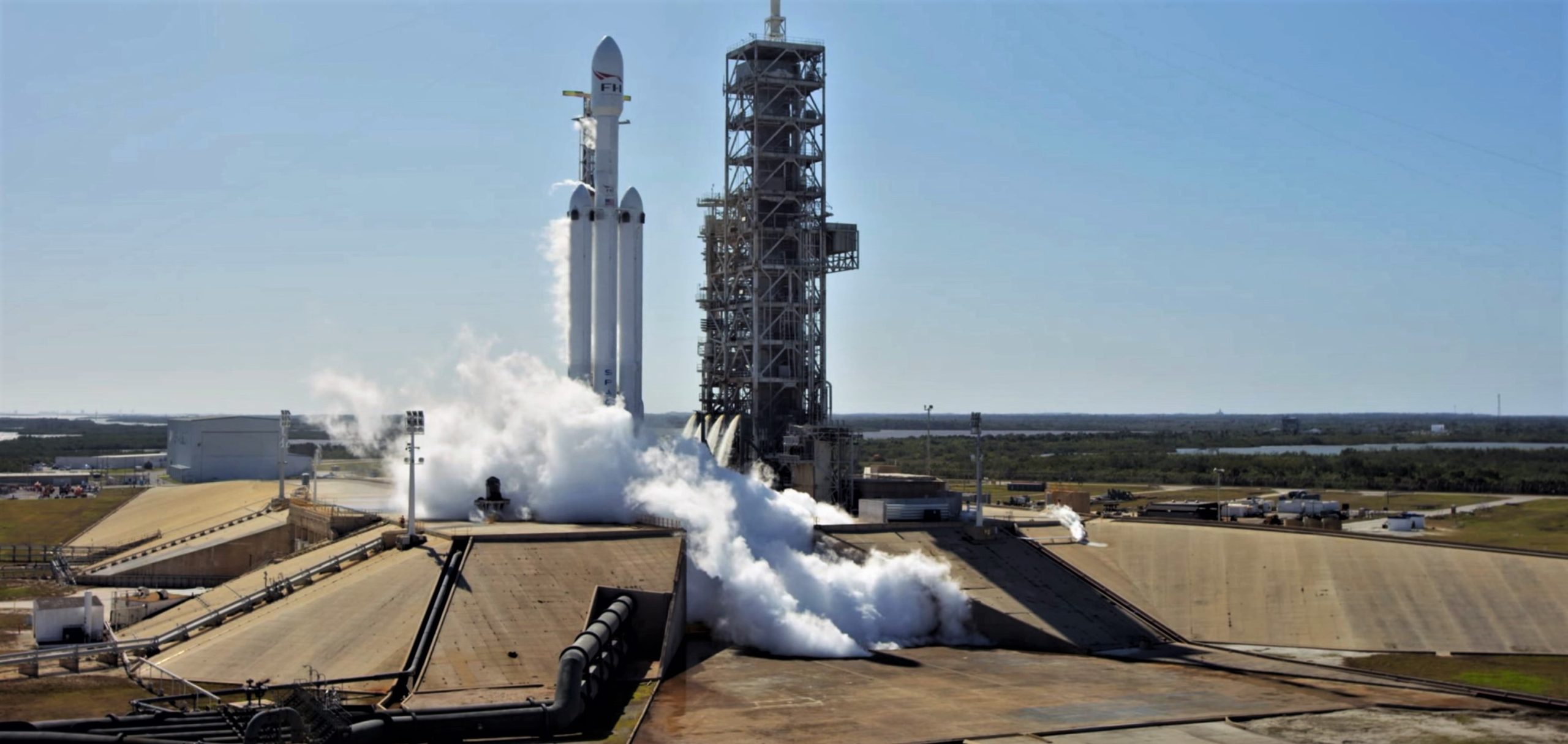
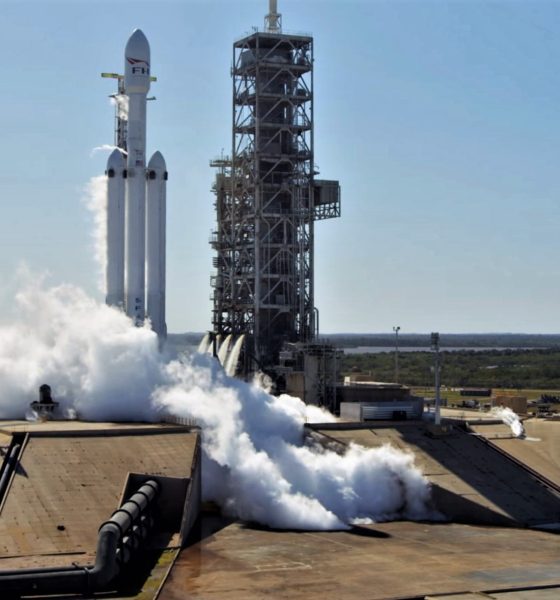
News
SpaceX’s next Falcon Heavy begins to arrive at 39A as center core heads to TX
Approximately a week after a Falcon Heavy side booster – the first of two – arrived at SpaceX’s LC-39A launch complex, a sign of late-stage preparation for the massive rocket’s second and third launches, a Falcon Heavy center stage was spotted rolling through the Waco, Texas locale on its way to SpaceX’s McGregor testing facilities.
Signified by the outlines of unusual bumps under the Falcon booster’s protective shrink wrap, this probable Falcon Heavy center core’s Texas arrival indicates that SpaceX has most likely completed static fire testing of both side boosters, with the second booster now likely to depart McGregor and/or arrive at SpaceX’s Florida facilities in the coming weeks.
The first component of Falcon Heavy Block 5 has arrived at HLC-39A! https://t.co/38spGaCps9
— Thomas Burghardt (@TGMetsFan98) December 22, 2018
In February 2018, Falcon Heavy took flight for the first time ever, bringing to an end an almost mythical series of delays that pushed the rocket’s debut back more than five years. Aside from the unintentional demise of Falcon Heavy Flight 1’s center core, the inaugural launch was a spectacular and technologically valuable success, perfectly verifying the rocket’s ability to safely ignite, launch, separate, and recover two Falcon 9-class boosters simultaneously. SpaceX also took the opportunity – a payload with no practical value aside from inspiration – to perform a successful six-hour coast of the Falcon upper stage, demonstrating a capability critical for many potentially valuable launch contracts.
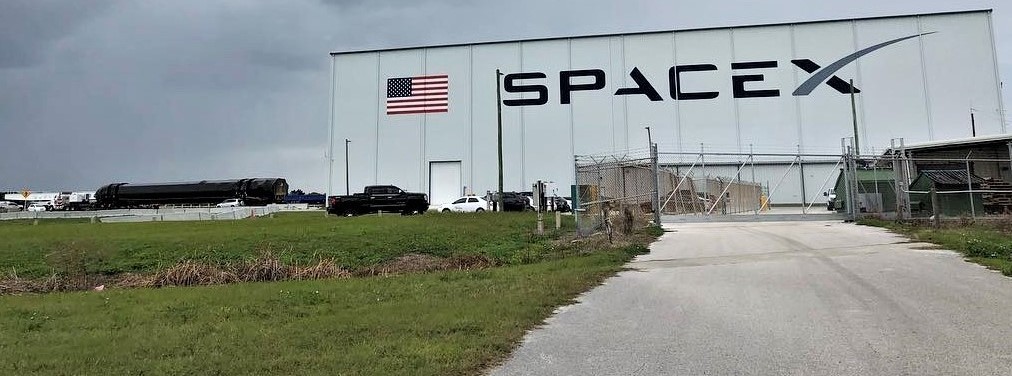
Now verified by planning schedules, SpaceX plans to attempt a truly impressive feat in the first half of 2019. Assuming all goes well during the center booster’s static fire and the subsequent integration and static fire of all three first stages, the company intends to launch the same Falcon Heavy hardware (all three boosters) twice in as little as two months, currently tentatively penciled in for February/March and April 2019.
Surprise sighting of a #SpaceX Falcon 9 rocket booster in my hometown headed a few minutes down the road to the McGregor, TX test site. First time in years seeing a booster in transit “in the wild” like this. 🚀 @elonmusk #falcon9 #falconheavy #STEM #bfr #space pic.twitter.com/daEz4NZPi5
— Abby Garrett (@abbygarrettart) January 1, 2019
Corroborated a few weeks ago by a NASA official involved in one of the payloads that will be present on that planned April launch, SpaceX plans to attempt recovery of both the side boosters and center core and rapidly refurbish them after their first launch in February or March, nominally placing the 6000 kg (~13,200 lb) Arabsat 6A satellite into a high-energy orbit. Perhaps as few as 4-8 weeks later, the rocket will be reintegrated, perform a second static fire at Pad 39A, and launch once again with a USAF rideshare known as Space Test Program (STP) 2, a program specifically designed to allow the Air Force to support low-risk test launches of unproven rockets.
Even more so than the fact that an ~8-week Falcon Heavy turnaround would simultaneously break SpaceX’s previous booster turnaround record in triplicate, the biggest reason to be skeptical of these plans is the fact that this schedule appears to require that the USAF fly a mission on not one but three flight-proven Falcon boosters. This stands at odds with the military branch’s unwillingness (by all appearances) to so much as allow a brand new Falcon 9 enough propellant margin (typically just a few percent) to land itself after the December 23rd launch of GPS III SV01, let alone allow their satellites to ride on a previously-flown rocket.
- Falcon Heavy is composed of a Falcon 9 upper stage and three Falcon 9-class boosters. (SpaceX)
- Falcon Heavy’s simultaneous side booster recovery. This will likely be repeated for both Arabsat 6A and STP-2. (SpaceX)
- The communications satellite Arabsat-6A. (Lockheed Martin)
- The USAF’s STP-2, a combination of a few dozen different satellites. (USAF)
The major wrench in the machine here is the fact that GPS III SV01 most likely cost the USAF upwards of $700M to procure and will ultimately become a critical part of a widespread infrastructural upgrade, whereas STP-2 features two dozen or so small satellites worth dramatically less than the single GPS satellite SpaceX launched last month. STP-2 also operates under a program that is in large part meant to offer opportunities for new or wholly unproven launch vehicles (like Falcon Heavy) to conduct experimental launches, carrying the assumption that certifying those rockets for national security space (NSS) missions would be in the best interests of the Air Force and DoD.
As such, the back-to-back Falcon Heavy launch schedule is by no means impossible despite the fact that it offers up many reasons to doubt its plausibility. Either way, the fact that the next Falcon Heavy’s center core has already left SpaceX’s Hawthorne factory – following in the footsteps of two new side boosters – is a nearly unequivocal sign that the rocket’s second launch rapidly approaching.
For prompt updates, on-the-ground perspectives, and unique glimpses of SpaceX’s rocket recovery fleet check out our brand new LaunchPad and LandingZone newsletters!

News
Tesla FSD fleet is nearing 7 billion total miles, including 2.5 billion city miles
As can be seen on Tesla’s official FSD webpage, vehicles equipped with the system have now navigated over 6.99 billion miles.

Tesla’s Full Self-Driving (Supervised) fleet is closing in on almost 7 billion total miles driven, as per data posted by the company on its official FSD webpage.
These figures hint at the massive scale of data fueling Tesla’s rapid FSD improvements, which have been quite notable as of late.
FSD mileage milestones
As can be seen on Tesla’s official FSD webpage, vehicles equipped with the system have now navigated over 6.99 billion miles. Tesla owner and avid FSD tester Whole Mars Catalog also shared a screenshot indicating that from the nearly 7 billion miles traveled by the FSD fleet, more than 2.5 billion miles were driven inside cities.
City miles are particularly valuable for complex urban scenarios like unprotected turns, pedestrian interactions, and traffic lights. This is also the difference-maker for FSD, as only complex solutions, such as Waymo’s self-driving taxis, operate similarly on inner-city streets. And even then, incidents such as the San Francisco blackouts have proven challenging for sensor-rich vehicles like Waymos.
Tesla’s data edge
Tesla has a number of advantages in the autonomous vehicle sector, one of which is the size of its fleet and the number of vehicles training FSD on real-world roads. Tesla’s nearly 7 billion FSD miles then allow the company to roll out updates that make its vehicles behave like they are being driven by experienced drivers, even if they are operating on their own.
So notable are Tesla’s improvements to FSD that NVIDIA Director of Robotics Jim Fan, after experiencing FSD v14, noted that the system is the first AI that passes what he described as a “Physical Turing Test.”
“Despite knowing exactly how robot learning works, I still find it magical watching the steering wheel turn by itself. First it feels surreal, next it becomes routine. Then, like the smartphone, taking it away actively hurts. This is how humanity gets rewired and glued to god-like technologies,” Fan wrote in a post on X.
News
Tesla starts showing how FSD will change lives in Europe
Local officials tested the system on narrow country roads and were impressed by FSD’s smooth, human-like driving, with some calling the service a game-changer for everyday life in areas that are far from urban centers.

Tesla has launched Europe’s first public shuttle service using Full Self-Driving (Supervised) in the rural Eifelkreis Bitburg-Prüm region of Germany, demonstrating how the technology can restore independence and mobility for people who struggle with limited transport options.
Local officials tested the system on narrow country roads and were impressed by FSD’s smooth, human-like driving, with some calling the service a game-changer for everyday life in areas that are far from urban centers.
Officials see real impact on rural residents
Arzfeld Mayor Johannes Kuhl and District Administrator Andreas Kruppert personally tested the Tesla shuttle service. This allowed them to see just how well FSD navigated winding lanes and rural roads confidently. Kruppert said, “Autonomous driving sounds like science fiction to many, but we simply see here that it works totally well in rural regions too.” Kuhl, for his part, also noted that FSD “feels like a very experienced driver.”
The pilot complements the area’s “Citizen Bus” program, which provides on-demand rides for elderly residents who can no longer drive themselves. Tesla Europe shared a video of a demonstration of the service, highlighting how FSD gives people their freedom back, even in places where public transport is not as prevalent.
What the Ministry for Economic Affairs and Transport says
Rhineland-Palatinate’s Minister Daniela Schmitt supported the project, praising the collaboration that made this “first of its kind in Europe” possible. As per the ministry, the rural rollout for the service shows FSD’s potential beyond major cities, and it delivers tangible benefits like grocery runs, doctor visits, and social connections for isolated residents.
“Reliable and flexible mobility is especially vital in rural areas. With the launch of a shuttle service using self-driving vehicles (FSD supervised) by Tesla in the Eifelkreis Bitburg-Prüm, an innovative pilot project is now getting underway that complements local community bus services. It is the first project of its kind in Europe.
“The result is a real gain for rural mobility: greater accessibility, more flexibility and tangible benefits for everyday life. A strong signal for innovation, cooperation and future-oriented mobility beyond urban centers,” the ministry wrote in a LinkedIn post.
News
Tesla China quietly posts Robotaxi-related job listing
Tesla China is currently seeking a Low Voltage Electrical Engineer to work on circuit board design for the company’s autonomous vehicles.

Tesla has posted a new job listing in Shanghai explicitly tied to its Robotaxi program, fueling speculation that the company is preparing to launch its dedicated autonomous ride-hailing service in China.
As noted in the listing, Tesla China is currently seeking a Low Voltage Electrical Engineer to work on circuit board design for the company’s autonomous vehicles.
Robotaxi-specific role
The listing, which was shared on social media platform X by industry watcher @tslaming, suggested that Tesla China is looking to fill the role urgently. The job listing itself specifically mentions that the person hired for the role will be working on the Low Voltage Hardware team, which would design the circuit boards that would serve as the nervous system of the Robotaxi.
Key tasks for the role, as indicated in the job listing, include collaboration with PCB layout, firmware, mechanical, program management, and validation teams, among other responsibilities. The role is based in Shanghai.
China Robotaxi launch
China represents a massive potential market for robotaxis, with its dense urban centers and supportive policies in select cities. Tesla has limited permission to roll out FSD in the country, though despite this, its vehicles have been hailed as among the best in the market when it comes to autonomous features. So far, at least, it appears that China supports Tesla’s FSD and Robotaxi rollout.
This was hinted at in November, when Tesla brought the Cybercab to the 8th China International Import Expo (CIIE) in Shanghai, marking the first time that the autonomous two-seater was brought to the Asia-Pacific region. The vehicle, despite not having a release date in China, received a significant amount of interest among the event’s attendees.
